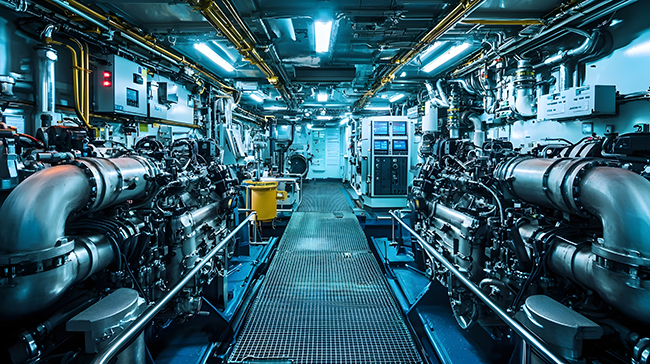ASA (American Standard Association) flanges, now largely superseded by ASME (American Society of Mechanical Engineers) standards (particularly B16.5), held particular significance, in the past, for the United States Navy and other military branches. This was primarily due to their robust design and compatibility with high-pressure systems. Here’s a breakdown of the key aspects that made these flanges significant:
High-pressure Applications
- ASA flanges were designed to withstand high pressures, making them suitable for naval shipboard applications that involve steam, hydraulics, and other high-pressure systems.
- In the past, the Navy developed specific military specifications like MIL-F-20670 for carbon steel flanges and MIL-F-20042 for bronze flanges, which outlined the dimensions, tolerances, materials, and other specifications for pipe flanges used on Navy ships.
Standardization and Interchangeability
- The establishment of these military specifications ensured consistency and interchangeability of flanges within the Navy’s fleet.
- This standardization made it easier to procure, install, and replace flanges, streamlining maintenance and repair operations on naval vessels.
Adaptations for Naval Use
- Navy flanges, based on these specifications, had different outside diameters, thicknesses, and drilling patterns compared to their commercial counterparts to suit the unique requirements of naval shipboard use.
- They often used smaller bolts but in higher numbers to maintain the same connection pressure, helping to save weight on Navy ships.

Transition to Modern Standards
- While ASA flanges were vital for their time, modern standards like ASME B16.5 have largely replaced them in both commercial and military applications.
- These new standards build upon the foundations laid by ASA, but incorporate advancements in materials, design, and manufacturing techniques to offer improved performance, safety, and efficiency.
In essence, ASA navy and military size flanges played a crucial role in ensuring the safe and reliable operation of naval vessels by providing robust connections for high-pressure systems and enabling standardization within the fleet. However, the continued evolution of engineering standards has led to the widespread adoption of more advanced and refined flange designs in both military and commercial sectors today.
Additional information on ASME B16.5 is available on the ASME.org website.
Flange protection remains a crucial necessity in preventing dust, debris and other elements from contaminating or damaging flanges. While flange designs may be evolving, flange protection remains poised to cover all aspects of the changes.

